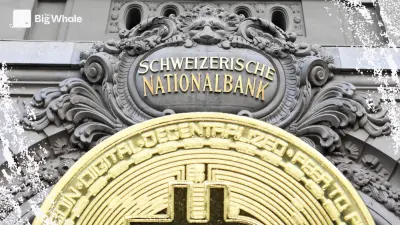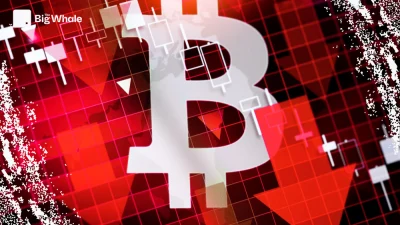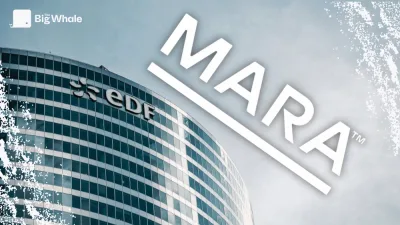TBW - David Duong (Coinbase): "ETH's disappointing price can be explained by a migration of speculative activity away from Ethereum"
"ETH's disappointing price can be explained by a migration of speculative activity away from Ethereum"

Currently, Ethereum's value is captured by rollups and less by layer 1. Do you think that the roadmap, which gives priority to L2s, could threaten the L1 business model?
David Duong: That's an excellent question. It's not a new subject; this dynamic has been going on for some time now. It's true that L2s are extracting value from Ethereum, particularly since the introduction of blobs with Cancun, which have made sequencers much more profitable for L2s. However, I think this debate is partly a red herring, as it distracts from the reality. The development of L2s was a gamble at the start, but it has turned out to be a huge success, even if the economic value has not yet fully followed.
Today, within the Ethereum Foundation, many are actively thinking about how to recover some of that value on layer 1. But it's not simple, and more importantly, I don't think it's the "fault" of L2s. A large proportion of the ecosystem's funds have gone to explore other layer 1s like Solana, which have managed to capture attention with more visible opportunities, such as the rise of memecoins.
I think that most of the loss of value on Ethereum can be explained more by a migration of activity to other ecosystems than by any extraction of value by the L2s themselves. This could actually change if real-world assets (RWAs) grow more concentrated on Ethereum.
>> Solana and memecoins: investigating a toxic addiction
What do you think of the Pectra update? Isn't it too early to increase the size of blobs?
No, I don't think it's premature. We're already seeing strong demand for the temporary storage space offered by blobs. Today, on average, Ethereum supports three blobs per block, with a maximum of six. Pectra is proposing to increase these figures to an average of six and a maximum of nine blobs per block. Given the activity we're seeing, particularly on L2s, it makes sense to anticipate this growth. We may even saturate the space available temporarily for blobs.
In my view, Pectra is a proactive development to meet current demand on L2s, rather than a hasty initiative. It is a necessary adjustment to accompany the rise of applications built on Ethereum and its L2s.
>> Pectra : Everything the next Ethereum update will change
A proposal is circulating to introduce some sort of L1 tax. What do you think about this?
Yes, I've seen this idea floated, notably by the bank Standard Chartered. In my view, it was primarily a thought exercise: an attempt to explore different ways of getting Ethereum to recover more of the value captured by L2s. But I very strongly doubt that this proposal has any chance of coming to fruition.
This is not an approach that, in my view, would align well with Ethereum's economic fundamentals. This type of "pricing" would be more extractive than anything else and would risk weakening the ecosystem as a whole. There are other, much better ideas for strengthening Ethereum without creating unnecessary friction between L1 and L2. Personally, this is not a solution I would support.
>> Customs taxes to strengthen Ethereum's business model?
"ETH ETF inflows are comparable to what the SPDR Gold ETF achieved in 2004, a launch that was considered extremely successful"
Why do you think the ETH price is so low and why is the project disappointing during this cycle?
One of the main explanations has to do with the changing market dynamics this year. The majority of wealth creation has taken place around memecoins, with a clear split between institutional investors - who remain focused on blue chips like Bitcoin - and retail investors, who have ventured further into the speculative world of altcoins.
Many of the projects focused on Ethereum, which offered mechanisms such as points, were initially perceived as innovative, but ultimately contributed to eroding Ethereum's value by driving users to seek other liquidity opportunities.
However, it is important to note that DeFi, for its part, remains firmly anchored on Ethereum. In recent weeks, we've even seen a return of activity on protocols such as Aave, not least because of interest rate trends and the macroeconomic context. In short, this is not a simple problem of value capture by L2s, but a migration of speculative activity away from Ethereum, while its decentralised finance ecosystem remains strong.
>> Ethereum (ETH): What is waiting for the protocol and its token?
And regarding the low flows into Ethereum ETFs?
I would qualify this perception. It's true that, compared with Bitcoin ETFs, flows into Ethereum ETFs may seem modest. But if we take a step back, the results are quite respectable. Since their launch last July, ETH ETFs have attracted nearly $3.9 billion in net inflows. This is comparable to what the SPDR Gold ETF achieved in 2004, a launch that was considered extremely successful.
Of course, next to the $40 billion captured by Bitcoin ETFs, this seems low, but it was expected: Ethereum was never meant to compete at parity with Bitcoin. If your expectations were for 25% to 30% of the performance of Bitcoin ETFs, you were disappointed. But objectively, the flows are solid and show that institutional demand for Ethereum does exist.
>> Ethereum ETFs allowed on Wall Street: what consequences for ether?
I sometimes say that Ethereum could become the "Linux of the blockchain", a system for romantics, because the project is not opportunistic enough, unlike Solana. What do you think?
That's a very apt comparison. Ethereum is a very dynamic blockchain, but its approach is fundamentally different from Solana's. Where Solana is rapidly pushing developments and attempting visible innovations, Ethereum is taking a more academic, rigorous approach. What I admire about the Ethereum community is that it is tackling complex topics, such as the impact of quantum computing, that few other blockchains are giving serious thought to.
Researchers like Justin Drake and Dankrad Feist are working on Ethereum's sustainability over several decades. Pectra, with its emphasis on account abstraction, should also greatly improve the user experience. Ethereum therefore remains a platform with enormous potential, even if its pace of development can sometimes seem slower.
No one really represented Ethereum at the White House crypto summit. Isn't that a sign of a loss of influence?
I don't think so. The future of blockchains will, in my opinion, be multi-chain. There won't be a single winner that crushes all the other platforms. Ethereum remains fundamentally relevant, but it is now evolving in a more complex landscape with many other L1s and L2s. Furthermore, in the tokenisation of assets, large institutions are now looking to deploy their solutions across multiple blockchains to limit the risk of liquidity fragmentation. The fact that Ethereum is not omnipresent at certain political events does not mean that it is losing its strategic importance.
Do you think the Ethereum Foundation should be more aggressive, for example by distributing more money to projects?
There is always room for improvement, but the Foundation has already largely supported many projects. Admittedly, it suffers from a marketing deficit: no one is proactively "selling" Ethereum. Many of the projects supported by the Foundation work behind the scenes. Yet in such a competitive world, it would be useful for Ethereum to do a better job of promoting its initiatives.
On the funding side, the Foundation has already invested in many infrastructure projects and research. I would like to see more funding directed towards real, user-oriented use cases, and I think this is a trend that is starting to develop.
>> Jérôme de Tychey: "Mes propositions pour la fondation Ethereum"
Would Ethereum need a company like MicroStrategy to accumulate ETH?
It's an interesting comparison, but I think the dynamic is different. For Bitcoin, MicroStrategy clearly acted as a catalyst by absorbing a significant part of the available supply, which supported the price rise. But Ethereum is not just a store-of-value asset: it is first and foremost a smart contract platform. Ethereum's role in the ecosystem is much more functional than that of Bitcoin, which has positioned itself as "digital gold".
Many blockchains are now seeking to compete with Ethereum by specialising, for example with Solana for speed or Sui for parallelism with Move. This competition makes the valuation dynamic different. As a result, the issue is not so much having a company accumulating massive amounts of ETH as continuing to develop concrete and attractive use cases on Ethereum.
>> Report - Bitcoin Treasury Companies : At the heart of a business model unique in the world
"The more Bitcoin is perceived as a valuable asset, the less people will want to use it to pay"
We are increasingly hearing that Bitcoin is becoming a store-of-value asset. Isn't it dangerous for the project if the perception that it is first and foremost a means of payment disappears?
That's an excellent and very profound question. In economic history, it is extremely rare for a single asset to be both a daily means of exchange and a store of value. Gresham, with his famous "law", had already theorised that "bad" money drives out "good" money, because nobody wants to spend an asset whose perceived value is high and rising. Bitcoin is no exception to this psychological rule: the more it is perceived as a valuable asset, the less people will want to use it to pay for everyday goods or services.
That said, I don't think becoming a store of value will harm Bitcoin's future. On the contrary, it could position it even more firmly in global investment portfolios, like gold, with the advantage of limited, programmed issuance and resistance to human manipulation - something that sets it radically apart from precious metals.
>> The big challenges ahead for Bitcoin
Is the perception of Bitcoin changing in the US?
Clearly, yes. Bitcoin adoption has grown markedly in recent months, thanks in particular to spot ETFs, which have widened access for institutional investors. Bitcoin is starting to be recognised as a serious macro asset, which can provide diversification to a portfolio in the same way as other asset classes. Many investors are beginning to understand that Bitcoin is not just a technology bet; it can also play a strategic role in an asset allocation, particularly in a context where traditional markets are marked by high uncertainty.
There has been a lot of talk about airdrops recently. In your opinion, what makes a good airdrop?
Honestly, I don't consider myself to be the best person to give advice on airdrops, having not benefited hugely from this mechanic myself. That said, the industry is starting to become aware of the problem of token overabundance. The massive creation of tokens, sometimes via tools like Pump.fun, has saturated the market and diluted the perceived value of new projects.
Today, with the changing regulatory environment and increased pressure on fundamentals, we're seeing a pivot towards a more rigorous approach: teams are thinking more about revenue, real value creation, and the long-term impact of an airdrop on their tokenomics. In my opinion, over the next two years, the perception of airdrops will evolve even further.
>> The hidden business of airdrops: between mirage and reality
Isn't it a bit of a shame to see Bitcoin fail in countries where it would be most useful, like Argentina where stablecoins dominate?
I understand that feeling. When Bitcoin was created, the hope was that it could become a safe haven asset for people living under unstable economic regimes. But in countries like Argentina, the dollar is still the safe haven par excellence, because of its historical role. This explains the success of dollar-backed stablecoins. However, in the longer term, I believe that Bitcoin's value proposition as a supranational asset, outside of state control, will become increasingly relevant.
As geopolitical tensions and trade imbalances grow, the idea of a global, decentralised, borderless digital currency will inevitably gain ground. It hasn't happened yet, but I think we're heading towards a world where Bitcoin or another crypto will play that role on a large scale.
"Some projects prefer not to issue tokens at all and keep the value captured "in house""
Outside the US, which country is the most dynamic for Coinbase?
It's hard to say precisely, as we don't report specific growth data by country. But if you look at studies such as those by Chainalysis, which analyses geographical adoption, you can see that the United States remains one of the biggest markets.
In Europe, the situation is also very dynamic: in France, for example, more than 9% (10% according to Adan, editor's note) of the population holds cryptos, which is very significant. With the launch of ETFs and changes to the regulatory framework, adoption is growing fast just about everywhere. I expect adoption to continue to grow on all continents in the coming years.
With regulatory pressure easing, many DeFi projects are considering activating their "fee switch". Do you think this is a good idea?
It will depend very much on the projects themselves. For a long time, it was almost implicit that a DeFi project had to launch its own token, often without activating direct revenues to avoid any regulatory confusion. Today, this paradigm is changing. Some projects prefer not to issue a token at all and keep the value captured "in house".
Activating the "fee switch" - i.e. sharing part of the revenue with the token holders - could be a sensible strategy for established protocols like Uniswap. But it is not a universal solution. Each project will need to carefully assess what this entails in terms of governance, taxation, and user perception.
>> Fee Switch dans la DeFi : Entre-revolution-economique-et-mirage-marketing
As a representative of a major centralised exchange, do you have an opinion on Hyperliquid, which is causing quite a stir among decentralised exchanges?
To be totally transparent, we don't list Hyperliquid on our platform, so I'm limited in what I can say about it. That said, as an observer of the market, I can say that Hyperliquid has been extremely active. It has captured a significant share of the volume, particularly in the decentralised trading category. Admittedly, the overall enthusiasm around DEX has ebbed a little recently - from almost 20% market share to around 15-17% - but Hyperliquid remains a very solid project and very interesting to follow. It's a very good example of the vitality of the sector.



